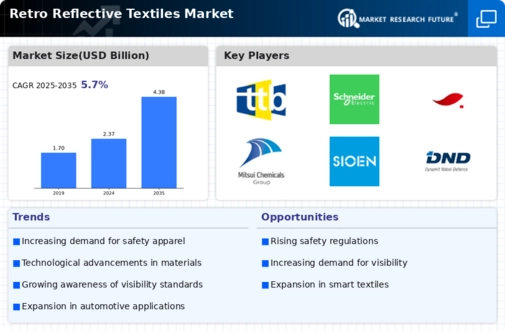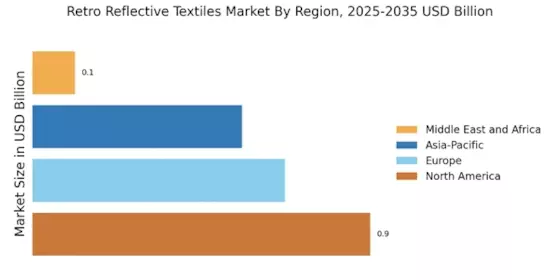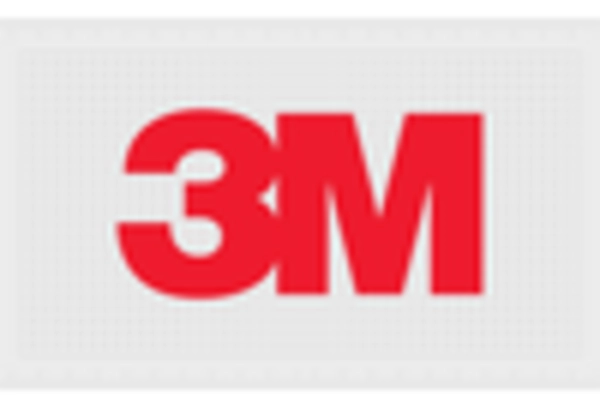Rising Awareness of Road Safety
The Retro Reflective Textiles Market is significantly influenced by the rising awareness of road safety among the general public and authorities. Campaigns promoting the importance of visibility for pedestrians, cyclists, and motorcyclists are gaining traction, leading to increased demand for retro reflective materials in clothing and accessories. Government initiatives aimed at reducing road accidents are also contributing to this trend, as they often promote the use of reflective gear. Recent reports suggest that road safety campaigns have led to a 10% increase in the adoption of reflective materials in urban areas. This heightened focus on safety is likely to sustain the growth of the retro reflective textiles market.
Expansion of Automotive Applications
The Retro Reflective Textiles Market is witnessing a significant expansion in automotive applications, particularly in vehicle safety features. Retro reflective materials are increasingly utilized in vehicle signage, license plates, and safety vests for roadside assistance personnel. The automotive sector's focus on enhancing visibility and safety is likely to drive demand for these textiles. Recent statistics indicate that the automotive safety market is expected to reach USD 30 billion by 2026, with retro reflective textiles playing a crucial role in this growth. This trend suggests a promising future for manufacturers and suppliers within the retro reflective textiles market.
Growing Demand for High Visibility Apparel
The Retro Reflective Textiles Market is experiencing a notable increase in demand for high visibility apparel, particularly in sectors such as construction, transportation, and emergency services. This surge is largely driven by heightened awareness of safety standards and regulations that mandate the use of reflective materials in workwear. According to recent data, the market for high visibility clothing is projected to grow at a compound annual growth rate of approximately 6% over the next five years. As organizations prioritize worker safety, the integration of retro reflective textiles into uniforms and gear becomes essential, thereby propelling the overall market forward.
Technological Innovations in Textile Manufacturing
The Retro Reflective Textiles Market is poised for growth due to ongoing technological innovations in textile manufacturing. Advances in fabric technology, such as the development of lighter and more durable reflective materials, are enhancing the performance and appeal of retro reflective textiles. Innovations like digital printing and nanotechnology are enabling manufacturers to create more versatile and effective products. As a result, the market is likely to see an influx of new offerings that cater to diverse consumer needs. This evolution in manufacturing processes could potentially lead to a market expansion, as companies strive to meet the demands of various industries.
Increased Adoption in Sports and Outdoor Activities
The Retro Reflective Textiles Market is benefiting from the rising popularity of sports and outdoor activities, where visibility is paramount. Athletes and outdoor enthusiasts are increasingly opting for apparel and gear that incorporate retro reflective textiles to enhance safety during low-light conditions. This trend is particularly evident in running, cycling, and hiking communities, where reflective materials are essential for visibility. Market analysis indicates that the outdoor apparel segment is projected to grow by 5% annually, further solidifying the role of retro reflective textiles in this sector. As consumer awareness of safety continues to rise, the demand for reflective gear is expected to follow suit.


















Leave a Comment